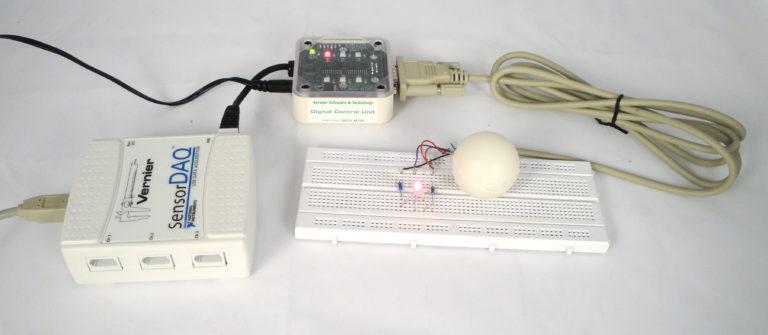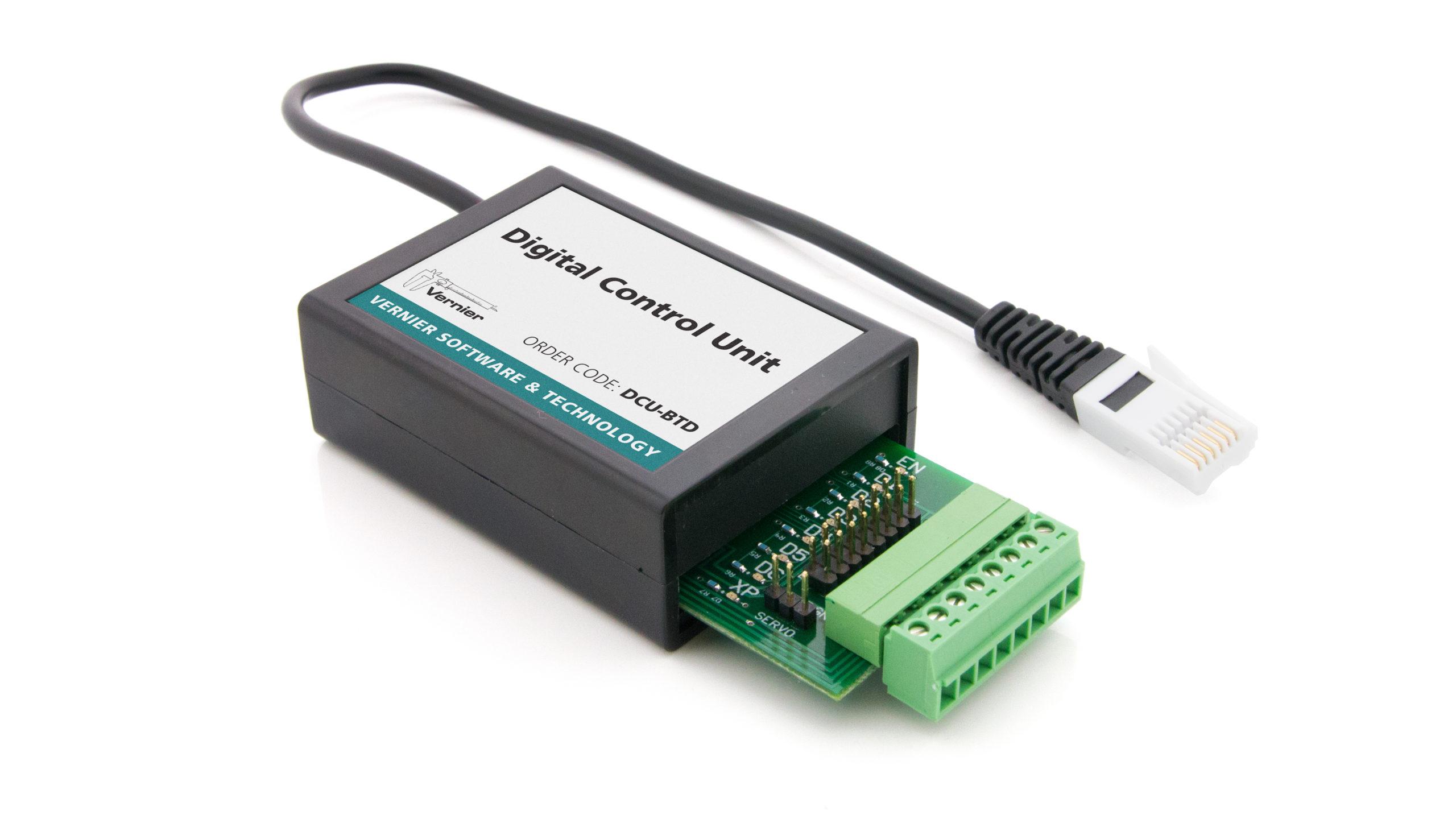LED Color Mixer
Experiment #3 from Engineering Projects with NI LabVIEW and Vernier
- Subject
- Engineering

Introduction
LEDs (Light Emitting Diodes) are long-lasting light sources made from a special semiconductor material that converts electrical current directly into light. Unlike incandescent lamps that emit broad-spectrum white light (all the colors of the rainbow), LEDs emit a small wavelength range that appear as a single color. In the human eye, the receptors that interpret hues of color are called cones. Cones can be classified into three basic types based on their responsiveness to long, medium, and short wavelengths, or red, green, and blue color. A 3-color LED (sometimes called an RGB LED) emits the three colors of light (red, green, and blue) that trigger the cones in the eye. A RGB LED actually contains three individual LEDs encased in one shell. It looks like a single LED with four leads or wires – one for each color and a fourth lead for the common ground. Additional colors can be perceived by the human eye when the individual LEDs are illuminated simultaneously in different combinations.
Objectives
In this Project, you will build a circuit and write a LabVIEW program to illuminate the three different colors of light (red, green, or blue) in a RGB LED. The user should be able to select any one of the three colors by name from a front panel control and be able to turn off all three colors while the program is running. Since LEDs can be destroyed if too much current flows through them, you should wire each of the three leads in series with three current-limiting resistors.
Sensors and Equipment
This experiment features the following sensors and equipment. Additional equipment may be required.
Ready to Experiment?
Ask an Expert
Get answers to your questions about how to teach this experiment with our support team.
- Call toll-free: 888-837-6437
- Chat with Us
- Email support@vernier.com
Purchase the Lab Book
This experiment is #3 of Engineering Projects with NI LabVIEW and Vernier. The experiment in the book includes student instructions as well as instructor information for set up, helpful hints, and sample graphs and data.


